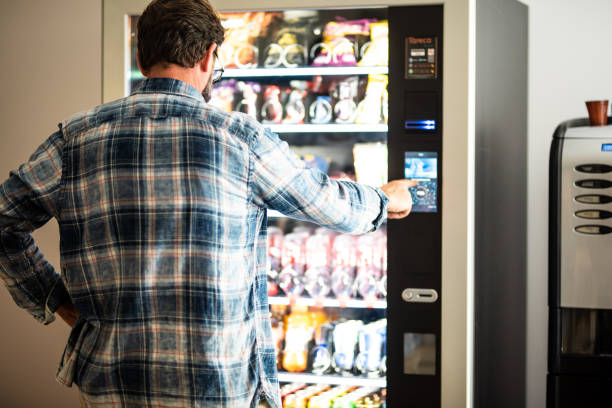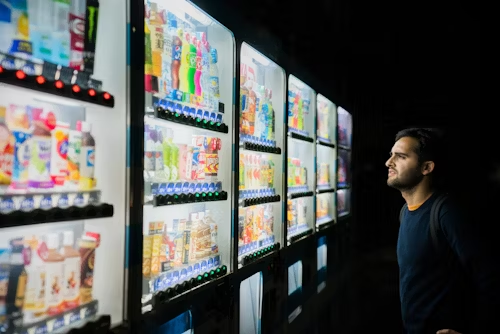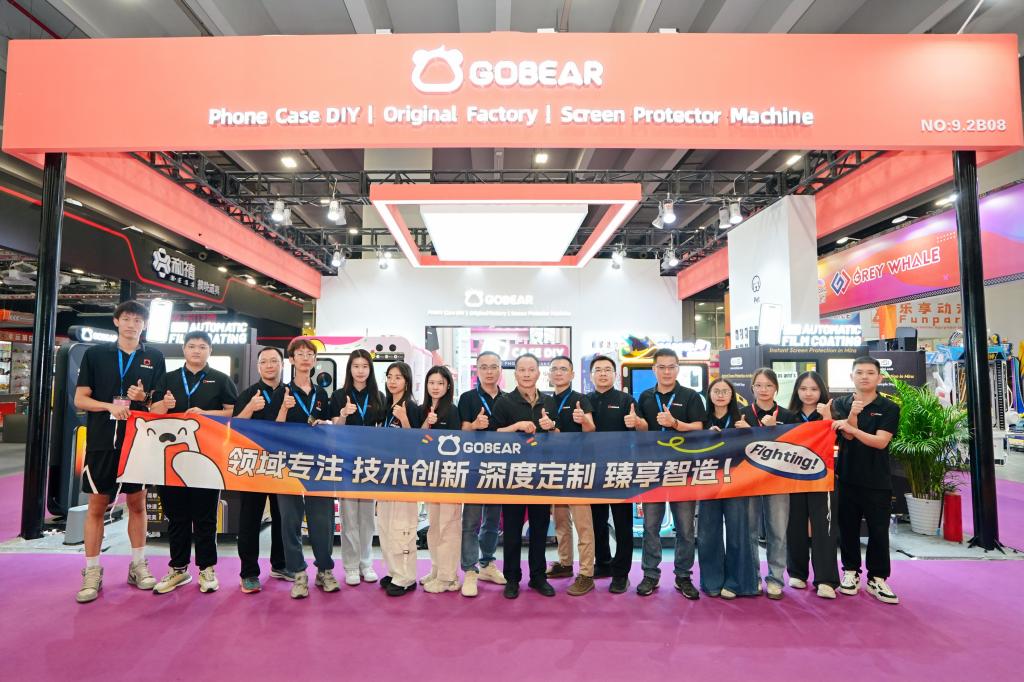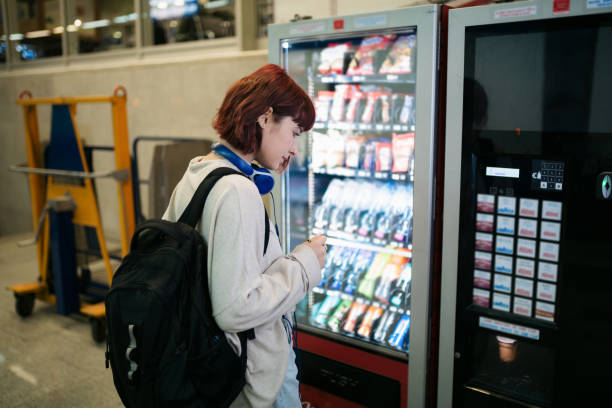7 Facts About Phone Case Vending Machine You Probably Didn't Know - GOBEAR
Behind the sleek design of phone case vending machines lies smart technology. Let's explore the amazing facts about phon...
Selecting the right products is key to keeping your vending machines profitable and consistently in use. Every location attracts unique buying habits, so your vending machine product selection must fit the environment and refresh at the right pace. Follow the steps below to choose items that sell steadily, minimize waste, and keep your customers coming back.

Before choosing what to stock, get clear on where your machine is placed and who uses that space. This understanding shapes everything from product mix to price points and payment systems. Skipping this step often leads to slow-moving items and wasted inventory budget. Take time to observe who passes by, what they look for, and how much they are likely to spend. A gym crowd, hospital visitors, school students, and commuters in a transit hub all have different priorities, and your machine should reflect those needs, not a one-size-fits-all selection.
Use foot traffic patterns, local demographics, and age preferences to refine your decisions. Younger buyers around 18–35 often lean toward healthier items and prefer cashless or mobile payments. Professional environments with buyers aged 35–55 tend to value reliability and quick, no-hassle purchasing.
When aligning pricing and product positioning, consider the spending comfort of the location:
Budget-conscious neighborhoods: Lower-priced, everyday snacks and drinks move reliably.
Gyms and wellness centers: Better-for-you and protein-focused products perform well.
Corporate offices and business districts: Premium snacks, cold brew coffee, and convenient packaged meals can justify higher pricing.
Transit hubs and airports: Faster turnover and premium grab-and-go SKUs are common due to urgency and higher willingness to pay.
Regional preferences also influence demand. Tech-forward areas may adopt smart vending, healthier assortments, and app-based purchasing more quickly.

To get the best return from your vending machines, choose products that sell quickly and still leave room for profit. Look at your sales data regularly to understand which items move fastest and which deliver healthier margins. This helps you avoid shelves full of low-margin “fast sellers” or high-margin products that sit untouched. Use real performance patterns from each location rather than general assumptions.
Pay attention to placement and rotation as you refine the mix:
Place the most frequently purchased items at eye level to encourage quick, repeat purchases.
Position higher-margin items where they are easy to notice and grab without extra effort.
Rotate products based on season, time of day, and local habits to keep interest high.
Group complementary items side by side, such as snacks with drinks, to encourage bundled purchases.
Remove slow performers without hesitation and replace them with items that show early traction or match new preferences gathered from customer feedback.
Place CaseDIY’s vending machines in busy locations to offer fast, high-quality personalized phone cases. With a smart cloud platform, no software fees, and 3-year warranty, you can achieve a payback in about a month assuming daily sales of 10 units. Explore OEM branding options and remote management tools to simplify operations and maximize returns.


Start by looking at sales reports from each machine and comparing how products perform in different locations. When a product consistently sells slowly, you can swap it out to keep every slot productive. If your machine includes inventory tracking software, real-time stock updates help prevent outages and lower the chances of expired items. Cashless payment data and remote monitoring also allow you to manage multiple machines smoothly without visiting each site as often.
Observing who buys from the machine and what they choose often reveals clear patterns. A college campus, for instance, may see energy drink demand spike during exams, while gyms tend to sell more protein snacks and hydration beverages. Seasonal shifts also play a role. Adjusting your mix to reflect these patterns makes the machine feel appropriate for its setting. Offering a balanced range of premium, mid-range, and value items keeps the selection accessible without making inventory harder to manage.
Customer expectations are shifting toward healthier choices, better quality, and convenient purchasing. These trends highlight where to adjust your product mix to stay competitive.
Health-Focused Product
Health-oriented locations (workplaces, gyms, schools) now prefer items like protein bars, plant-based chips, low-sugar drinks, and gluten-free snacks. These products sell steadily and align with wellness programs. When sourcing, look for suppliers who can guarantee consistent quality and clear ingredient labeling.
Niche and Premium Items
Premium snacks, cold brew, oat lattes, small-batch treats, and selective non-food essentials (like travel skincare or basic tech accessories) help your machine stand out. Start with small test batches to confirm demand before expanding, and favor brands with responsible packaging when possible.
Tech-Driven Product Optimization
Machines with cashless payments and real-time inventory tracking make it easier to see what sells and restock efficiently. This lets you adjust your product mix based on actual performance rather than guesswork, reducing waste and keeping popular items available.
Many customers return expecting familiar product placement, so keeping your layout consistent supports repeat purchases. A simple planogram helps maintain that structure across restocks. When data suggests a change, small and gradual adjustments are usually more effective than major reshuffles. It’s also helpful to introduce new products selectively so the machine stays clear, organized, and easy to shop. This approach supports stable performance across all locations.
Understanding where operators commonly go wrong helps you avoid unnecessary losses and keep every slot in your machine working to generate consistent revenue. Below are the most frequent mistakes, and how to correct them.
| Mistake | What Happens | How to Fix |
|---|---|---|
| Skipping Market Research | Products don’t match local demand, leading to slow turnover and tied-up capital. | Study foot traffic, customer demographics, and competitor assortments before selecting products. |
| Choosing Products Without Testing | Assumptions replace data, causing poor product fit and wasted space. | Run small test batches and track short-term sales before committing to full inventory. |
| Ignoring Customer Feedback and Trends | Machines feel outdated and lose repeat buyers. | Review sales reports regularly and introduce trending flavors or healthier items when demand shifts. |
| Overreliance on Low-Cost or Generic Brands | Lower trust and slower sales, even if margins seem better on paper. | Keep well-known, high-loyalty brands in core categories to maintain machine credibility. |
| Poor Product Mix | Too many similar items reduce choice appeal and limit impulse purchases. | Balance staples, healthy options, and novelty items to serve multiple buyer preferences. |
| Not Tailoring to the Location | The offer doesn’t match the specific audience of the site. | Build a location profile (e.g., gym = protein snacks; industrial site = filling, affordable items). |
| Not Reviewing Inventory Performance | Continuously restocking slow sellers locks up cash and lowers profitability. | Replace underperforming SKUs quickly and rotate in test products to refresh interest. |
| Ignoring the Competition | The machine blends in and fails to attract new users. | Monitor nearby machines and fill assortment gaps—unique flavors, better packaging, or specialty items. |
You can boost sales and keep your vending machines profitable by matching your products to each location’s audience. Track sales, observe customer choices, and use those insights to balance high-margin items with fast movers. Keep your top sellers visible, rotate seasonal or trending items, and retire slow performers quickly. This smart approach keeps your machines relevant and your profits steady.
If you’re exploring specialty machines, CASE DIY has phone case vending machines that make stocking a breeze and turn over products fast. Pairing your data-driven product mix with their reliable machines helps you maximize revenue and keep customers coming back. Contact us today and see how easy it is to level up your vending business.
High-traffic areas with a clear target audience usually generate the best returns. Places like gyms, offices, transit hubs, schools, and entertainment venues attract predictable foot traffic and repeat customers. Understanding who passes by and what they want helps you choose products, machine type, and payment options that match demand and maximize sales.
Track sales velocity and margins to spot fast movers versus slow sellers. Consider unit cost, selling price, restocking effort, and potential waste. Seasonal trends and emerging products can guide smarter stocking decisions and prevent unsold inventory.
Review sales and turnover every 4 to 12 weeks to keep your selection fresh. Rotate seasonal or limited-time items to engage customers, and use surveys or app feedback to identify which products to swap. Regular updates maintain interest and optimize machine space.
Healthy options are growing in demand, including protein-rich snacks, low-sugar drinks, and plant-based items. Interactive or customizable merchandise attracts attention, while sustainability and ethical sourcing influence purchase decisions. Staying aware of these trends helps your machines stay relevant.
Healthy products appeal to wellness-minded consumers and institutions like gyms or offices. Items with good flavor, clear quality, and fair pricing maintain turnover while protecting profits. Offering variety ensures your machines serve diverse customer needs.
Tell us about your business goals, and our experts will provide a tailored solution and a detailed profitability report. Let's start building your new revenue stream together.